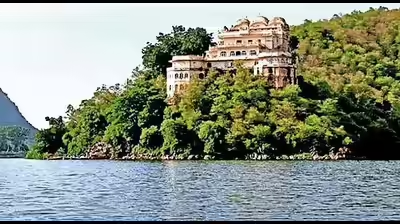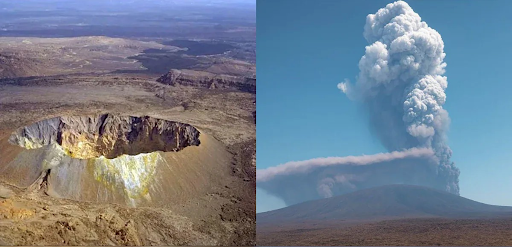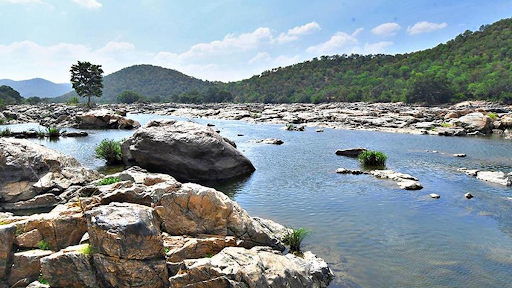




Disclaimer: Copyright infringement not intended.
Bangladesh outreach to China for river conservation, port modernization & economic projects comes amid strained India-Bangladesh ties with New Delhi wary of Beijing growing strategic influence in region.
|
Parameter |
Details |
|
Location |
Situated in northern West Bengal, India |
|
Geographical Extent |
Approximately 60 km long & varies between 17 to 22 km wide |
|
Significance |
The only land route connecting India's mainland to Northeastern states |
|
Borders |
Nepal to west |
|
Strategic Importance |
Ensures connectivity to Seven Sisters (Northeast India) |
|
States Connected |
West Bengal (Mainland India) |
|
Major Cities & Towns |
Siliguri (Commercial hub) |
|
Infrastructure & Connectivity |
National Highway-27 (NH-27) (Main highway connecting Northeast) |
|
Security Concerns |
Extremely narrow & vulnerable to blockade during conflict |
|
Geopolitical Threats |
China’s Chumbi Valley proximity poses a military threat |
|
Economic Importance |
Trade corridor for India-Nepal, India-Bhutan & India-Bangladesh |
|
Past Conflicts & Issues |
1962 Sino-Indian War: India’s concern about defending corridor heightened |
|
Current Developments |
India working on alternative connectivity routes via Assam, Mizoram & Arunachal Pradesh |
|
Challenges |
Too narrow, making it easy to cut off |
|
Mitigation Strategies |
North East Industrial Corridor project |
|
Parameter |
Details |
|
Origin |
Tso Lhamo Lake, Sikkim, India (Eastern Himalayas, near India-China border) |
|
Length |
414 km (India: 309 km, Bangladesh: 105 km) |
|
Drainage Basin Area |
12,159 sq km (India: ~10,155 sq km, Bangladesh: ~2,004 sq km) |
|
States & Countries Flowing Through |
India: Sikkim, West Bengal |
|
Tributaries (Major) |
Left Bank: Lhonak Chu, Lachung Chu, Rangpo Chu |
|
Major Cities Along River |
India: Lachen, Mangan, Kalimpong, Jalpaiguri, Cooch Behar |
|
Mouth (Endpoint) |
Brahmaputra River (Jamuna River) in Bangladesh |
|
Hydroelectric Projects |
India: Teesta Stage I-VI (Sikkim), Teesta Barrage (West Bengal) |
|
Importance |
Irrigation: Supports agriculture in Sikkim, North Bengal & northern Bangladesh |
|
Teesta Water Dispute |
Between India & Bangladesh |
|
China's Role |
Bangladesh seeking Chinese investment for Teesta River conservation |
|
Flood & Erosion Issues |
Frequent flooding in North Bengal & Bangladesh |
|
Climate Change Impact |
Glacial melting in Himalayas altering water availability |
|
Conservation & Management Efforts |
India: River linking project proposal, flood management plans |
|
Current Geopolitical Concerns |
India fears Chinese involvement in Teesta conservation will expand China’s influence in Bangladesh |
|
Proposed Solutions |
Tripartite water-sharing agreement (India-Bangladesh-Nepal) |
|
Aspect |
Details |
|
Historical Ties |
India supported Bangladesh’s Liberation War (1971) against Pakistan. |
|
Political Relations |
Strong diplomatic ties, but occasional tensions over border & water-sharing issues. |
|
Economic Relations |
India is Bangladesh’s second-largest trade partner. |
|
Major Trade Exports from India |
Cotton & textiles, machinery, petroleum products, transport equipment, agricultural products. |
|
Major Trade Imports from Bangladesh |
Readymade garments, textiles, jute products, leather goods, pharmaceuticals. |
|
Connectivity & Transport |
Rail links: Dhaka-Kolkata Maitree Express, Bandhan Express, Mitali Express. |
|
Defence & Security Cooperation |
Joint military exercises: SAMPRITI (Army), COAST GUARD drills. |
|
Border & Immigration Issues |
4,096 km long border, world’s fifth-longest land border. |
|
Water-Sharing Agreements |
Ganga Water Treaty (1996): Agreement on Ganga river flow sharing. |
|
Energy Cooperation |
India supplies 1160 MW of electricity to Bangladesh. |
|
Chinese Influence in Bangladesh |
China is Bangladesh’s largest trade partner & major infrastructure investor. |
|
Recent Developments |
Bangladesh invited Chinese investment in Teesta River project. India’s concerns over security threats near Chicken’s Neck Corridor. |
|
Cultural & People-to-People Ties |
Common heritage: Language, food, festivals. |
|
Geopolitical Concerns |
Bangladesh balancing ties between India & China. |
|
Future Prospects |
Resolution of Teesta water-sharing to improve ties. |
For more information, please refer to IAS GYAN , IAS GYAN 1
Sources:
|
PRACTICE QUESTION Q. Examine impact of China’s increasing influence in Bangladesh on India’s strategic interests in South Asia. |






© 2025 iasgyan. All right reserved